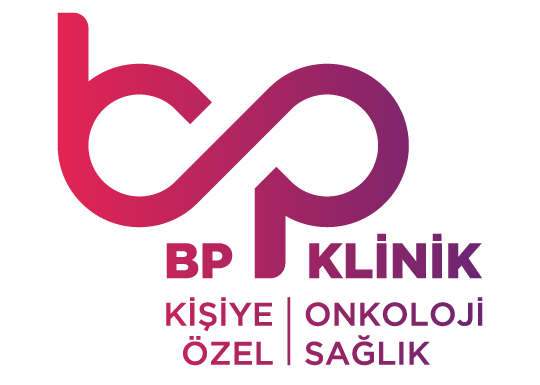What is Pancreatic Cancer?
What is Pancreatic Cancer?
Pancreatic cancer is the uncontrolled division and proliferation of cells that cause the pancreas to lose their functions. It is examined in two groups as exocrine and endocrine pancreatic cancer. Exocrine pancreatic cancer occurs in the ducts that carry the pancreatic juice. Cancer that arises in the cells that produce hormones is called endocrine pancreatic cancer.
The pancreas is an organ in the back of the stomach that produces the enzymes needed for digestion and transfers these enzymes to the duodenum (the first part of the small intestine) via the duct. It also produces hormones that regulate blood sugar.
Risk factors
Smoking is known to be a risk factor for pancreatic cancer. However, the genetic factors, family history and some mutations are thought to be effective in the disease. In addition, there are associations with factors such as advanced age, persistent pancreatitis attacks and gallbladder surgery, protein-based eating habits, and obesity, but there are no definite judgments.
Symptoms
The most common symptoms of pancreatic cancer, which rarely shows symptoms at early stages, are jaundice, weight loss and pain. Apart from these, symptoms such as constipation, diarrhea, gas pains and nausea can also be a harbinger of the disease. In some cases, sudden onset diabetes can be a stimulant. While there is no factor such as gallstones and alcohol consumption, being exposed to a pancreatitis attack can be considered as one of the signs of pancreatic cancer.
How is pancreatic cancer diagnosed?
Early diagnosis of pancreatic cancer is very difficult. It generally does not show any symptoms at early stages. The symptoms seen are also similar to different diseases. Diagnosis in pancreatic cancer is generally made with the help of tests and various imaging methods. The spread of cancer is called staging. Tests and imaging methods are very important in order to give an accurate and effective treatment.
Tests Applied to Diagnose Pancreatic Cancer
The past of the individual is questioned by performing a health screening. If there are chronic diseases, they are detected in this way. In the blood test, it is checked whether the blood is in the appropriate value ranges. The level of substances such as bilirubin is questioned. Tumor markers are the urine, blood and tissue tests that allow us to obtain information about the behavior of cancerous cells or to detect the presence of a tumor. For these tests, samples are taken from body and analyzed. Tumor markers CA 19.9 and CEA can provide information about the tumor and act as a guide for the diagnosed patients.
Imaging Methods
As with many cancer types, magnetic resonance (MR) is an important method for pancreatic cancer. Together with the adjacent structures of the pancreas, it is an important factor in demonstrating the diagnosis for the liver. In Computed Tomography (CT), images are transferred to the computer. Contrast material can be given to the individual to make the image more effective. In positron emission tomography (PET), the patient is given sugar (glucose) labeled with a radioactive substance. Cancer cells appear darker than other cells because they store large amounts of glucose. PET-CT devices combined with Computed Tomography keep the margin of error at minimal level. In ultrasound, the abdomen is examined using sound waves and the organs are visualized. In endoscopic ultrasound, information is obtained by inserting an imaging device that works with sound waves through the rectum or mouth. In endoscopic retrograde cholangiopancreaticography (ERCP), structures such as the bile duct and pancreatic duct from the duodenum are visualized using the endoscopic method. If the bile ducts and liver are visualized using X-rays, this method is called subcutaneous transhepatic cholangiography (PTC). In laparoscopy, the internal organs are examined from the inside with the surgical method. Imaging is performed by entering a tube through an incision in the abdominal wall. The process of taking tissue from the suspected region is called biopsy. Detailed results are obtained by analyzing this sample in a laboratory environment.
How is Pancreatic Cancer treated?
As in other types of cancer, surgery, radiotherapy, chemotherapy, local ablative treatments and heat therapy are some of the methods. The treatment process is carried out by a coordinated team specialized in many fields according to diagnosis.
Pancreatic cancer surgery
There are two different types commonly used. The first is curative surgery. These are operations applied in tumors that can be completely removed. On the other hand, palliative operations are applied in tumors that spread over a large region and cannot be completely removed due to various reasons. The aim of this type of surgery is to minimize the patient’s complaints.
Chemotherapy treatment in pancreatic cancer
Chemotherapy is the administration of a cancer drug to a patient by mouth or intravenously. The drugs can be effective on the whole body through the circulatory system. In some cases, chemotherapy can be applied in combination with different methods such as radiotherapy. It can be used after surgery. In this method, which is called adjuvant therapy, the aim is to destroy the cancerous cells that remain after the operation. The treatment called neoadjuvant is given before the operation to shrink the tumor.
Radiotherapy treatment in pancreatic cancer
The purpose of radiotherapy is to send high-energy X-rays to the cancerous region to kill the cells. By dividing the treatments, the dose given at one time is reduced to avoid damaging normal cells. However, in tumors that are not very large, the technique we call radiosurgery can be applied in 1-5 sessions. Radiosurgery is also an ablative treatment.
In cases where radiotherapy is generally not given alone, it can be applied as a neoadjuvant before the operation or as an adjuvant to increase local control after the operation. Radiotherapy can be used in combination with chemotherapy. Another use of radiotherapy is generally short-term palliative radiotherapy in metastatic individuals. The main purpose here is to keep the symptoms that negatively affect the patient’s life quality, such as pain, vomiting, nausea and bleeding, at a minimal level or, if possible, to eliminate them completely.
Non-Surgical Treatments in Pancreatic Cancer – Local Ablative Techniques
These methods are generally used if there is metastasis. In radiofrequency ablation (RFA), radiofrequency waves aim to destroy cancerous cells by heating them through a probe-like instrument inserted into the tumor. Unlike RFA, microwaves are used in microwave thermotherapy. In cryosurgery, there is freezing with the help of liquid nitrogen. In nanoknife treatment, electric current is applied to the tumor region. Successful results can be obtained by applying radiotherapy, especially radiosurgery and local ablative treatments together, in cases where it cannot be operated due to its spread to the surrounding tissues or the general condition of the patient is not good. When the surgeon says that he/she will not be operated on, you should consult Radiation Oncologist and Interventional Radiologist. Only Chemotherapy application is never sufficient in the treatment of pancreatic cancer.
Immunotherapy treatment in pancreatic cancer
Immunotherapy enables the body to fight cancer cells more effectively by activating the immune system








